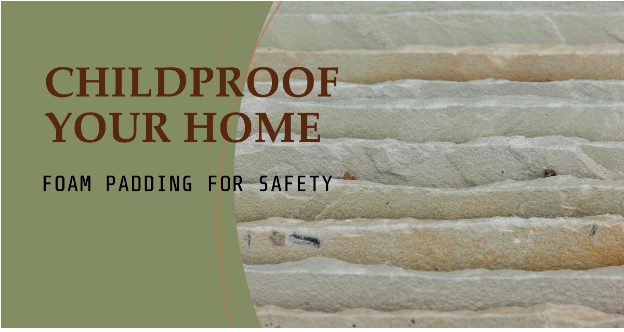Introduction
Childproofing a home is a crucial step for ensuring the safety and well-being of young children. As toddlers begin to explore their surroundings, they are often unaware of the dangers that common household features can pose. Foam padding serves as an essential tool in mitigating these risks by providing a soft buffer that can protect children from sharp corners, hard edges, and solid surfaces. This article will delve into the strategic use of foam padding as a means to safeguard your home against potential injuries.
The need for childproofing becomes more pronounced as children grow and become more mobile. The installation of foam padding is not just about protection but also about giving parents peace of mind. This guide will cover the key areas in the home that benefit most from foam padding, discuss the types of foam suitable for different applications, and provide practical tips on installation and maintenance.
Identifying High-Risk Areas in Your Home
One of the first steps in childproofing with foam padding is to identify areas in the home that pose the highest risk to children. Sharp furniture corners, hard edges on countertops, and the edges of stairs are common hazards. Each of these areas can cause significant injury to a young child who might stumble or fall against them.
Once these hazardous areas are identified, it’s important to prioritize which should be addressed first based on the child’s age and mobility. For crawling infants, lower cabinets and coffee table corners might be the most immediate concerns, while for toddlers who are pulling themselves up or beginning to walk, higher surfaces and stair edges might become the focus.
Choosing the Right Foam Padding
Selecting the appropriate foam padding is vital for effective childproofing. The market offers a variety of foam types, each with different properties and levels of protection. Soft, pliable foams are ideal for covering sharp corners where impact protection is crucial, while denser foams may be better suited for areas needing more structural support, such as under carpeting on stairs.
When purchasing foam padding, it’s important to look for products that are non-toxic and free from harmful chemicals.
Safety certifications or labels that indicate compliance with national safety standards are essential indicators of safe use around children. The unique shapes and sizes of furniture in homes often require customized solutions. Using foam cut to size can be a subtle yet effective way to ensure that every area, no matter how irregular, is adequately protected without the appearance of overt adjustments.
Installation Tips for Foam Padding
Installing foam padding correctly is as important as choosing the right type. For corners and edges, foam bumpers that come with pre-applied adhesive can be a convenient option. Ensure that the surface is clean and dry before applying the foam to make sure it adheres well and stays in place.
For larger areas, such as walls or the sides of furniture, you might need to cut the foam to size. Measure the area carefully, and use a sharp knife or scissors for a clean cut. If the foam does not come with an adhesive back, double-sided tape or foam-specific glue can be used to secure it in place. Remember to check the padding periodically to make sure it hasn’t shifted or loosened, as this can reduce its effectiveness.
Maintaining and Replacing Foam Padding
Maintaining foam padding is crucial for ensuring it continues to provide protection over time. Regular checks should be made to assess wear and tear or any dislodgement. If the foam becomes compressed or damaged, it may not offer adequate protection and should be replaced.
Foam padding can also gather dust and debris, which could become a hygiene issue, especially with infants and toddlers who are likely to touch and even chew on padded surfaces. Use a mild, child-safe cleaner to wipe down foam padding regularly, and ensure it’s fully dry before allowing children near it again.
Conclusion
Foam padding is a simple yet effective way to make your home safer for young children. By identifying risk areas, selecting the right foam, installing it properly, and maintaining it regularly, parents can significantly reduce the likelihood of injuries in the home. Childproofing is an ongoing process that adapts to the changing needs of a growing child, ensuring their safety through all stages of their early development.
With thoughtful preparation and careful attention to detail, foam padding can be an integral part of a comprehensive childproofing strategy, providing both safety for children and peace of mind for parents.
